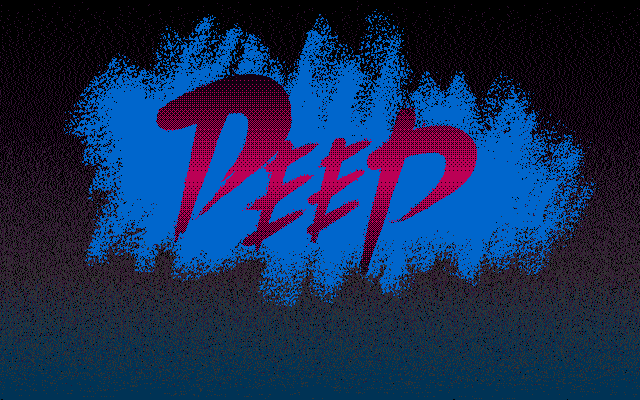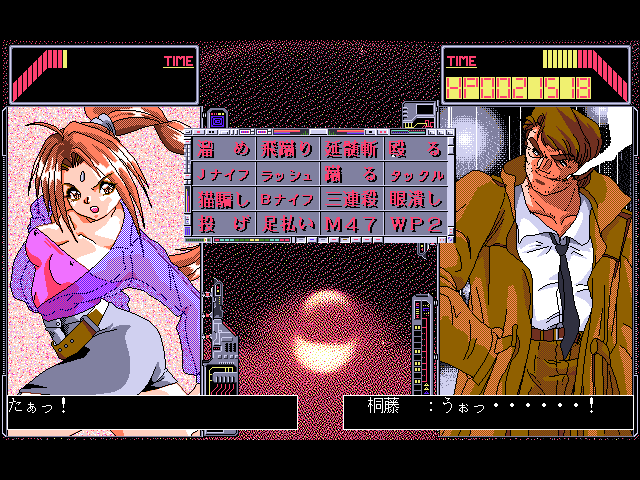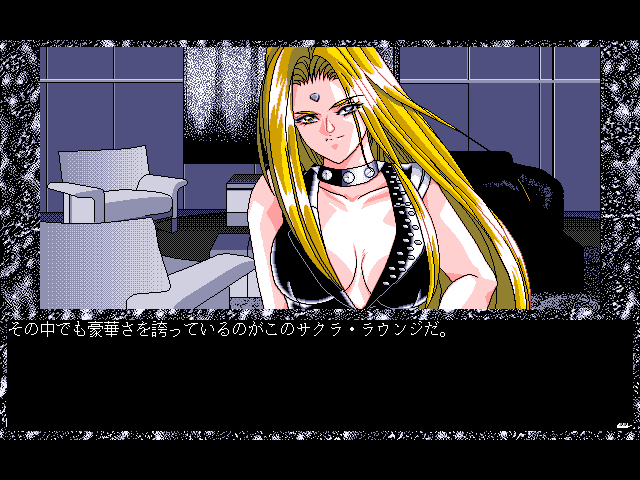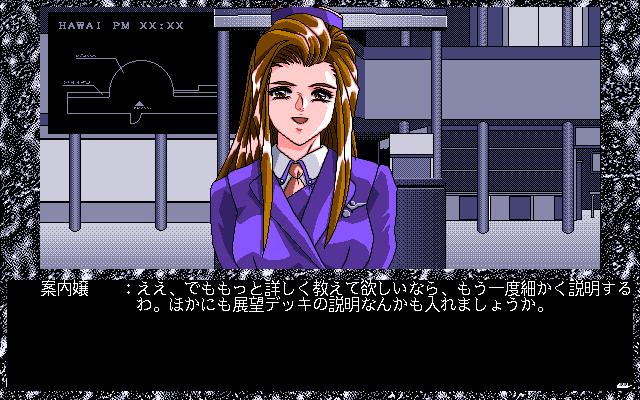Retro Replay Review
Gameplay
Deep presents a unique blend of grid-based exploration and point-and-click interaction, pushing players through a series of interconnected screens. You navigate a tiled map, selecting your next destination and uncovering new areas one location at a time. While some passages offer branching paths, the overall progression remains largely linear, ensuring that you experience the core narrative beats no matter which character you choose.
(HEY YOU!! We hope you enjoy! We try not to run ads. So basically, this is a very expensive hobby running this site. Please consider joining us for updates, forums, and more. Network w/ us to make some cash or friends while retro gaming, and you can win some free retro games for posting. Okay, carry on 👍)
Interactivity comes to life when you reach specific screens populated by NPCs or puzzle elements. Your cursor transforms contextually, offering commands like “Look,” “Talk,” “Use,” and “Pick Up.” This system rewards careful observation, as items and clues hidden in detailed backgrounds become vital to advancing the plot. Although the engine is straightforward, the varied environments—from abandoned research labs to neon-lit city streets—keep exploration fresh.
Combat in Deep diverges sharply from its adventure roots. Random encounters and scripted battles interrupt your journey, triggering a turn-based sequence governed by a ticking timer. Delay too long, and enemies seize the initiative, adding tension to each engagement. Despite RPG-style stats and an arsenal of weapons, battles are more about quick decision-making than character progression. The sizable command menu—mixing essential actions with red herrings—further intensifies the challenge, demanding quick thinking under pressure.
The balance between exploration, dialogue, and combat creates a steady rhythm that evolves as you advance. Early skirmishes serve primarily as tutorial moments, teaching you to sift through the menu chaos. Later fights force you to adapt on the fly, experimenting with commands to discover effective combos. While some may find the timer mechanic stressful, it injects a sense of urgency that mirrors the game’s high-stakes narrative.
Graphics
Visually, Deep adopts a late-90s aesthetic, combining pre-rendered backgrounds with hand-drawn character portraits. The environments are richly detailed, capturing the post-apocalyptic mood with crumbling infrastructure and flickering holographic signage. Each screen feels meticulously crafted, encouraging players to absorb every pixel of storytelling embedded in the scenery.
Character art stands out for its anime-inspired style, featuring expressive faces and dynamic poses. From the stoic Hunter operatives to the enigmatic “Jesus” prototype, portraits shift subtly during conversations, adding emotional weight to each line of dialogue. However, the graphics engine shows its age during combat sequences, where simplistic animations and static enemy sprites can feel dated compared to modern titles.
It’s important to note that Deep contains explicit sexual content, depicted through occasional CG scenes and mature character designs. These moments aim to underscore the game’s themes of human augmentation and moral ambiguity, but they may not suit all audiences. The developers have included options to skip or tone down these scenes, offering some control over the mature content.
Despite its age, Deep’s graphical presentation remains evocative. Lighting effects—such as the cold glow of laboratory terminals or the harsh flare of combat muzzle flashes—enhance immersion. The user interface, though cluttered during battles, uses color-coded icons and clear typography to guide your choices, balancing style with functionality.
Story
Deep unfolds in a dystopian near-future where the Third World War has left Earth in ruins. Rising from the ashes, Japan leverages its technological prowess to become the planet’s superpower. At the heart of this resurgence is Nexus, a megacorporation that pioneers cyborg development. Early Nexus experiments go awry, unleashing rogue cyborgs and straining global order.
By 2014, Nexus launches “Project Halleluja,” aiming to create the ultimate savior: an artificial young girl known as “Jesus.” Alongside three human agents—each with their own hidden motives—you embark on a mission to contain the chaos. Although each protagonist brings a distinct perspective, the main storyline remains consistent, weaving personal backstories into the broader conflict against Nexus.
The narrative excels at gradual world-building. Initial missions focus on containment of fugitive cyborgs, while later chapters peel back Nexus’s true intentions. Key plot twists emerge through investigative dialogue and found documents, rewarding players who delve into optional conversations and environmental lore. The result is a layered story that balances action, intrigue, and ethical dilemmas.
Deep’s script maintains a serious tone, tackling themes of identity, free will, and the ethics of artificial life. Even minor characters leave an impression, thanks to solidarity in voice acting and thoughtful characterization. While the overarching arc is familiar to fans of sci-fi thrillers, the integration of mythic symbolism—embodied by “Jesus”—elevates the narrative beyond typical corporate-conspiracy fare.
Overall Experience
Deep offers a compelling trip down memory lane for fans of late-90s adventure hybrids, blending exploration, dialogue, and timed combat into a cohesive package. Its deliberately paced progression ensures that neither story nor gameplay overshadows the other, fostering a balanced experience that unfolds over roughly 12–15 hours. Challenging puzzles and fast-paced battles provide enough variety to keep players engaged from start to finish.
Sound design and music reinforce the game’s atmosphere, pairing atmospheric synth tracks with tense percussion during combat. Dialogue is fully voiced in Japanese, with English subtitles provided—adding authenticity to the setting while occasionally introducing translation quirks that may amuse or bewilder.
Deep’s mature themes and explicit content are core to its identity, appealing to an adult audience comfortable with sci-fi violence and sexuality. While some may find the battle timer and large command menu overwhelming, these features contribute to the title’s unique challenge. Accessibility settings allow you to adjust difficulty and skip optional cutscenes, catering to both newcomers and veterans.
Ultimately, Deep stands as an intriguing relic of its era, rejuvenated by thoughtful design choices and a gripping storyline. It may not boast cutting-edge graphics or a sprawling open world, but its focused narrative, strategic combat, and evocative art style make it a worthy consideration for fans of story-driven sci-fi adventures. If you’re seeking a game that melds investigation, morality-driven plot twists, and reactive battles under time pressure, Deep delivers a distinct experience you won’t soon forget.
 Retro Replay Retro Replay gaming reviews, news, emulation, geek stuff and more!
Retro Replay Retro Replay gaming reviews, news, emulation, geek stuff and more!









Reviews
There are no reviews yet.